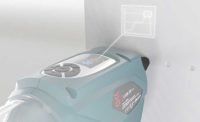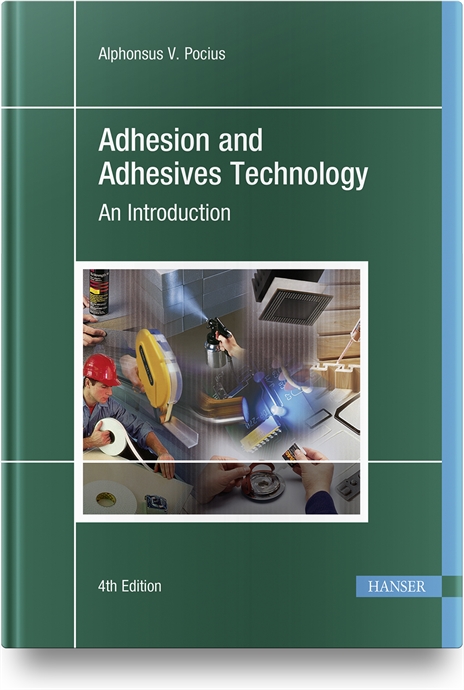Some assembly trends end quickly, while others last many years and become standard practices for manufacturing quality products. It’s safe to say that the need for manufacturers to dispense smaller and smaller amounts of various materials belongs in the latter category.
“The first dispensing system from the mid-1950s could only dispense dots at widths of fractions of an inch, whereas today’s equipment easily dispenses them in nanoliters,” explains Jay Richardson, sales director for Ellsworth Adhesives. “This need for smaller amounts has significantly increased since the consumer electronics boom of the 1990s, and it’s not done by any means. The amounts must keep getting smaller as product miniaturization continues.”
Every day, manufacturers in many industries dispense countless tons of adhesives, sealants, lubricants, coatings and thermal interface materials in milliliter, microliter and nanoliter volumes. A milliliter equals 10-3 liter, a microliter equals 10-6 liter, and a nanoliter equals 10-9 liter.
For example, some Tier 1 automotive suppliers regularly apply a 0.1-milliliter drop of threadlocker to the top terminal nut of spark plugs. Dispensed or sprayed for a few milliseconds, the threadlocker keeps the nut tightly in place on the plug shell or casing.
Aerospace manufacturers also need to dispense tiny amounts of material. Gary Helmers, vice president of dispensing for Creative Automation Inc., says one of his customers dispenses nanoliter-size dots of a conformal coating onto the outer periphery of 0.5-by-0.75-inch solar cells. The cells can be found on a variety of products, including the International Space Station.
Interestingly, as products have shrunk, the options for dispensing tiny amounts of material to assemble these products have grown. Today, manufacturers can choose from advanced contact spray nozzles and noncontact jetting systems, as well as delivery systems featuring precise rotary and piston pumps or rod-displacement technology. The bigger challenge, as always, is matching the right equipment to the application to optimize the assembly process.
Pinpointing a Market Need
More than a decade before the Nordson Co. introduced its first material dispenser in 1954, workers around the world were using pins and toothpicks to apply sealants or adhesives onto bullets and other items needed for their respective countries’ war efforts.
Claude Bergeron, product line manager for Nordson EFD, says this method is still used by many manufacturers worldwide. He notes that large plants in some low-wage countries feature many assembly lines with hundreds of workers applying adhesives to small parts using pins. Smaller companies find the method is well suited for very low-volume applications or those that are not conducive to automation.
Dispensing technology evolved significantly in the 1960s and 1970s, and included the development of time-pressure dispensing. This method applies air pressure to the top of a syringe to force material through a needle.
In semiautomated systems, an assembler places the needle tip on the substrate and activates air pressure with a foot pedal. In fully automated applications, the syringe is fixtured and is triggered by a PLC or other controller.
Although time-pressure dispensing was easy to implement and increased production, the available systems offered little control over application variables. Changes in air pressure or material viscosity often led to variation in deposit size. As a result, by the early 1980s, manufacturers sought more accurate dispensing systems that featured metering, rotary or piston positive displacement pumps.
Jack Engel, founder, president and chief engineer of Creative Automation Co., says his company’s first piston positive displacement pump system was custom made in 1982. Designed and built for Hewlett-Packard, the system dispensed material onto PCBs to create a temporary solder mask. Two years later, a large telecom company had Creative make a system that dispensed material in dots only 0.03 inch in diameter.
These two experiences led Creative to introduce its SP1 pump in 1985. Engel says the pump’s initial appeal was its ability to cleanly dispense tiny amounts of solder paste, which often has large particles that can clog syringe tips.
After several years of refinement, Creative released the SP2 pump featuring True Volume technology. The pump features a piston (0.005 to 0.062 inch in diameter) that moves within the dispensing chamber to deliver an exact amount of fluid through the tip. Material is delivered without delay after chamber refilling. The pump maintains accuracy regardless of changes in temperature, viscosity or dot size (from 274 microliters down to 0.25 nanoliter).
Introduced at last year’s ASSEMBLY Show, the Angstrom CF positive rod displacement metering system from Nordson Sealant Equipment dispenses beads with a volume as little as 0.025 milliliter. Popular with electronics manufacturers, the system features an integrated start-stop dispense valve that ensures bead-volume accuracy.
David Mandeville, marketing manager for Nordson Sealant Equipment, says the system dispenses two-part adhesives and sealants directly from side-by-side cartridges, eliminating the need for feed hoses. (Cartridges are available for material ratios of 1-to-1, 2-to-1, 4-to-1 or 10-to-1 by volume.) The system’s rod is 1.25 inches long, 0.08 inch in diameter and has a stroke of only 0.06 inch.
Also released last year was the A310 TP (top pump) machine from Scheugenpflug Inc. USA with a 1- or 5-liter tank. This unit dispenses small amounts of one- or two-component materials that are highly viscous or sensitive and very expensive. Brandon Zinn, technician for Scheugenpflug, says some manufacturers use it to dispense material that costs more than $2,500 per pound.
The material is continuously stirred and kept under vacuum pressure to accelerate degassing prior to dispensing. Vacuum pressure is generated by a rotary vane pump at a range up to 5 mbar. Delivery volume is 70 milliliters per stroke, and agitation blade speed is 45 to 54 rpm. The machine also has a self-calibrating fill level sensor.
Earlier this year, Fluid Research Corp., an Ellsworth company, released the Z100 progressive cavity system for continuous delivery of micro beads. This system was specifically developed for LED lighting manufacturers to more accurately dispense very tiny amounts of thermal interface materials.
Contact or Noncontact
Regardless of amount, liquid or semi-viscous material is dispensed in either of two methods: contact (a tip or needle touches the substrate) or noncontact (material is shot onto the substrate at high velocity). Piston positive displacement pump dispensing requires substrate contact, as does time-pressure dispensing.
Last month, Nordson EFD introduced its XQR41 time-pressure dispense valve, which dispenses dots of material 100 to 150 microns wide at a rate of 400 per minute. Bergeron says the valve’s quick-release clasp design allows for easy removal of the fluid body to replace wetted parts within seconds. It’s also 60 percent smaller than conventional needle dispense valves.
Spray and jetting valves apply material in a noncontact manner, enabling manufacturers to dispense precise amounts into hard-to-reach areas or onto uneven or delicate substrates. When overspray spatter needs to be prevented in a spray application, manufacturers may prefer to use an anti-spatter valve or nozzle rather than a standard spray valve.
Jetting valves have only been around a decade or so, but are becoming popular. They feature a needle that moves back and forth at an incredible speed (up to 500 hertz per second) to dispense nanoliter-size dots. Manufacturers like that jetting valves offer positive shut-off and only need to move in the X and Y axes, which saves time.
Nordson EFD’s PICO 500-hertz jetting valve uses durable piezoelectric actuation technology to dispense fluids at up to 500 cycles per second, with dots as small as 0.5 nanoliter. Major components on the xMOD version are modular, interchangeable, and assemble or dissemble quickly to accommodate particular fluids. This valve deposits amounts as small as 2 nanoliters.
Several large consumer electronics manufactures use PICO valves to quicken assembly of wireless gadgets and TVs with glass display panels. According to Bergeron, the valves dispense a series of very fine dots that flow together into a continuous line. This line seals the edge circumference of two layers of glass that make up the TV display panel.
The digital SureShot 3500 jetting system from Hernon Manufacturing Inc. dispenses microliter shots at a rate of 6,000 per minute. Edgardo Rodriquez, director of sales and marketing for Hernon, says auto and truck makers use the SureShot to deposit miniscule amounts of oil into gears, transmissions and engines. Medical device companies use it to apply lubricants onto needle assemblies.
In late 2013, the company introduced its Autosealer 5300 ammunition-sealant dispensing machine featuring the 3500 system. The 5300 accurately and consistently dispenses sealants onto each cartridge, primer interface and bullet interface. Designed for high-volume production (up to 150 ppm with the company’s 59621 sealant), the machine comes complete with a touch-screen HMI featuring navigational menus, prompts and counters. Changeover time is only 5 to 15 minutes
Rodriguez says the 5300 can be fully automated with robotic machine loading or dedicated feed systems. Options include a feeder bowl and vision system to verify that sealant is present on the cartridge case mouth and primer interface.
Multisize Challenges
Dispensing tiny amounts of materials presents many challenges to manufacturers. One is making sure that their technicians or integrators properly program the dispensing equipment for optimum performance and minimum material waste. Equally important, their machine operators need to regularly check and replace nozzles, valves, needles and tips.
“Always respect the performance capabilities of dispensing equipment,” advises Mandeville. “If it’s designed to dispense quality dots as small as 0.5 milliliter, for example, don’t expect the same quality with a 0.02-milliliter dot. Some customers do this and complain when it happens. But most know better, and simply buy the right equipment to begin with.”
Preventing air bubbles in the material is important, especially in potting applications, notes Zinn. Proper agitation in the dispensing system is the best way to eliminate bubbles. All system components (lines, pumps, metering units) must be dry and vacuum-tight. The material must be dispensed from a vacuum chamber.
“It’s imperative to verify system capability many weeks before
integrating it into an assembly line,” says Bruno Thomann, CEO of Swiss Dispensing AG. Thomann is based in Switzerland and is a consultant for mta automation inc. “Verifying capability only days before will result in productivity lost to troubleshooting problems that should have been solved long ago.”
Mta’s Mini-NVD dispenses low- and medium-viscosity polyurethanes, silicones, epoxies and other polymers in volumes from 1.5 to 155 micoliters. Repeatability is ±1 percent.
The dispenser features a compact pump, motor, electrical controller and mixing chamber. Within the chamber is a blade that dynamically mixes two or more materials just prior to dispensing. William M. Hunter, North American area director for mta, says dynamic mixing improves material homogeneity and eliminates unused material.
Another challenge is shortening cycle time without lessening product quality. Scheugenpflug recently helped a Tier 1 manufacturer of diesel exhaust fluid (DEF) sensors cut its cycle time in half by using two nozzles rather than one. DEF sensors monitor urea level, temperature and concentration so on- and off-road vehicles meet worldwide emissions regulations.
“We’ve been able to help companies operate up to 32 nozzles with the same accuracy as if only one was used,” notes Zinn. “The challenge is making sure the dispensing system has a strong-enough axis. Adding many nozzles may increase system size, weight and footprint as much as 300 percent.”
Verifying the presence and proper location of micro and nano dots on parts are ongoing challenges as well.
“It’s very tough to verify the presence of a clear nanoliter dot on a clear substrate,” says Richardson. “Using adhesives that start out colored and turn clear as they cure can help. Another option is to add a UV tracer to the material. Many electronics manufacturers do this to verify that ultra-thin conformal coatings are on PCBs.”








